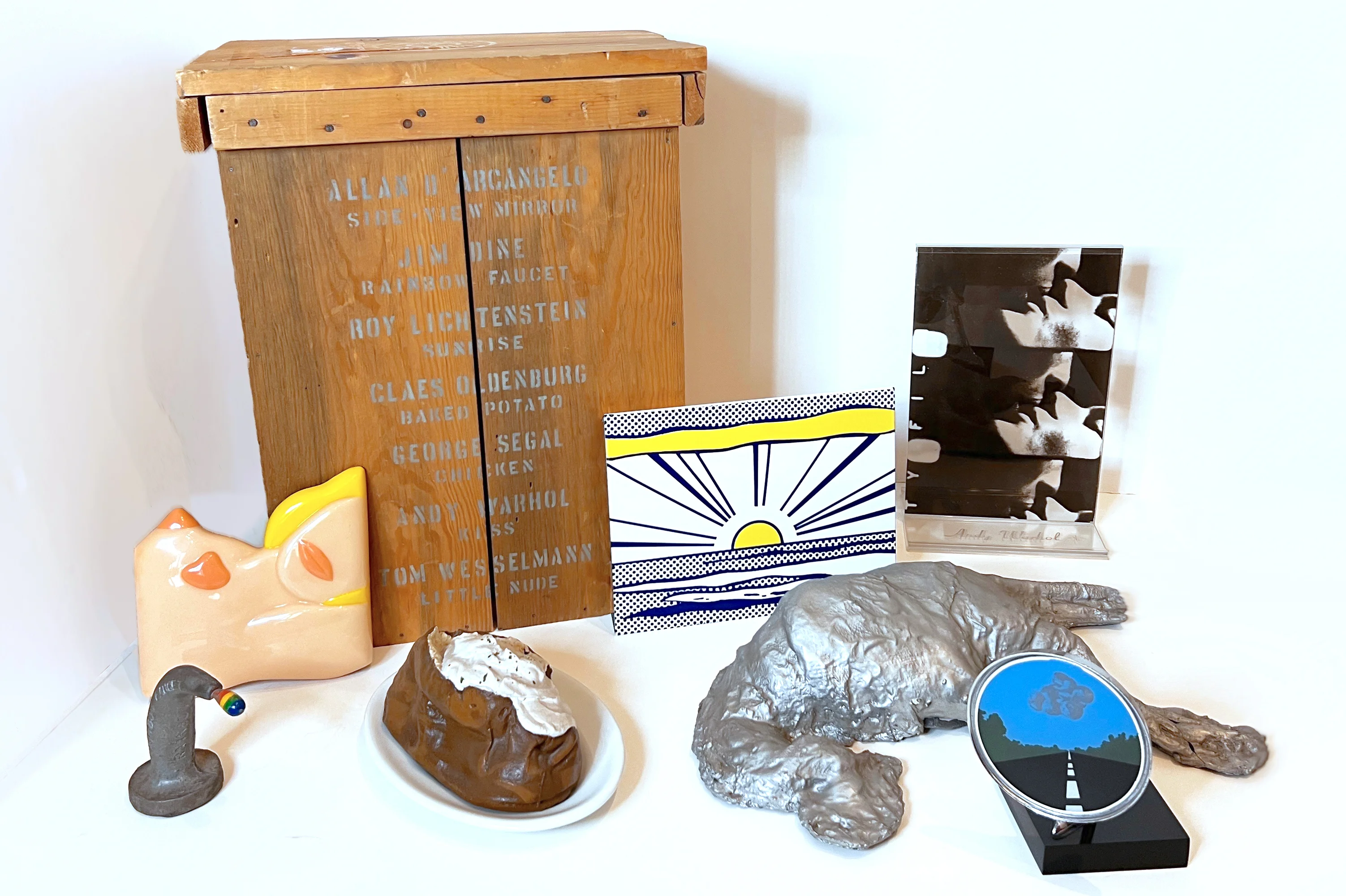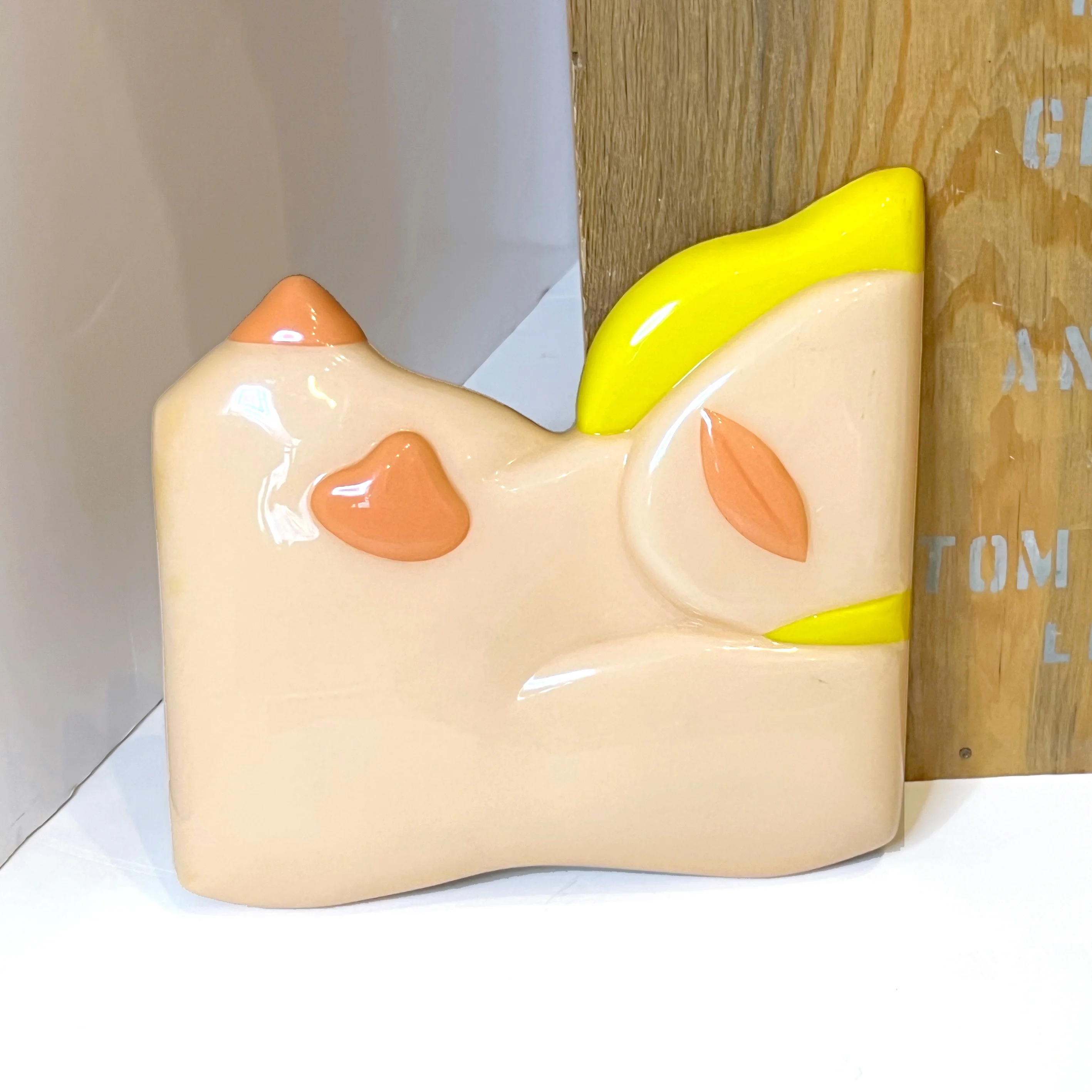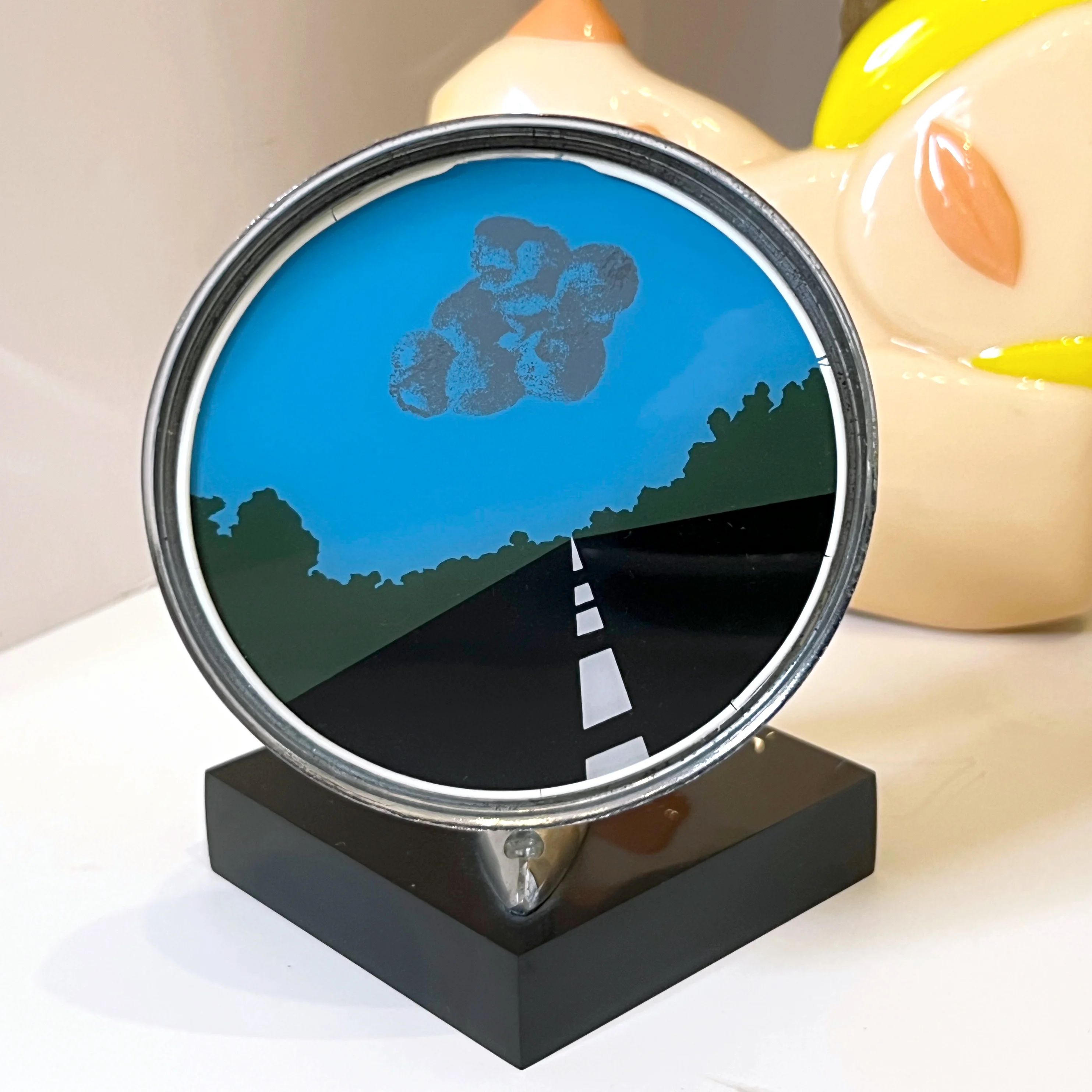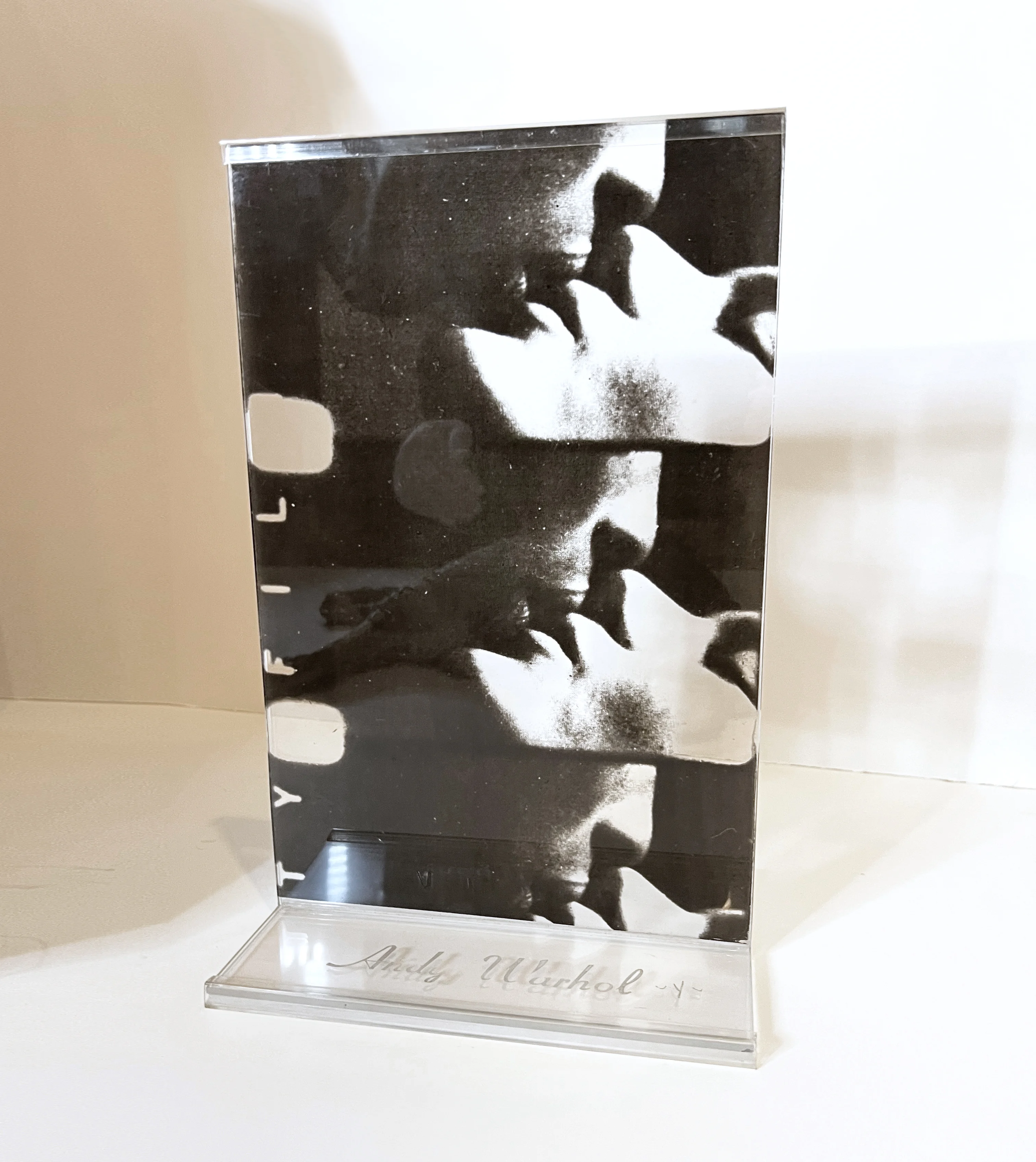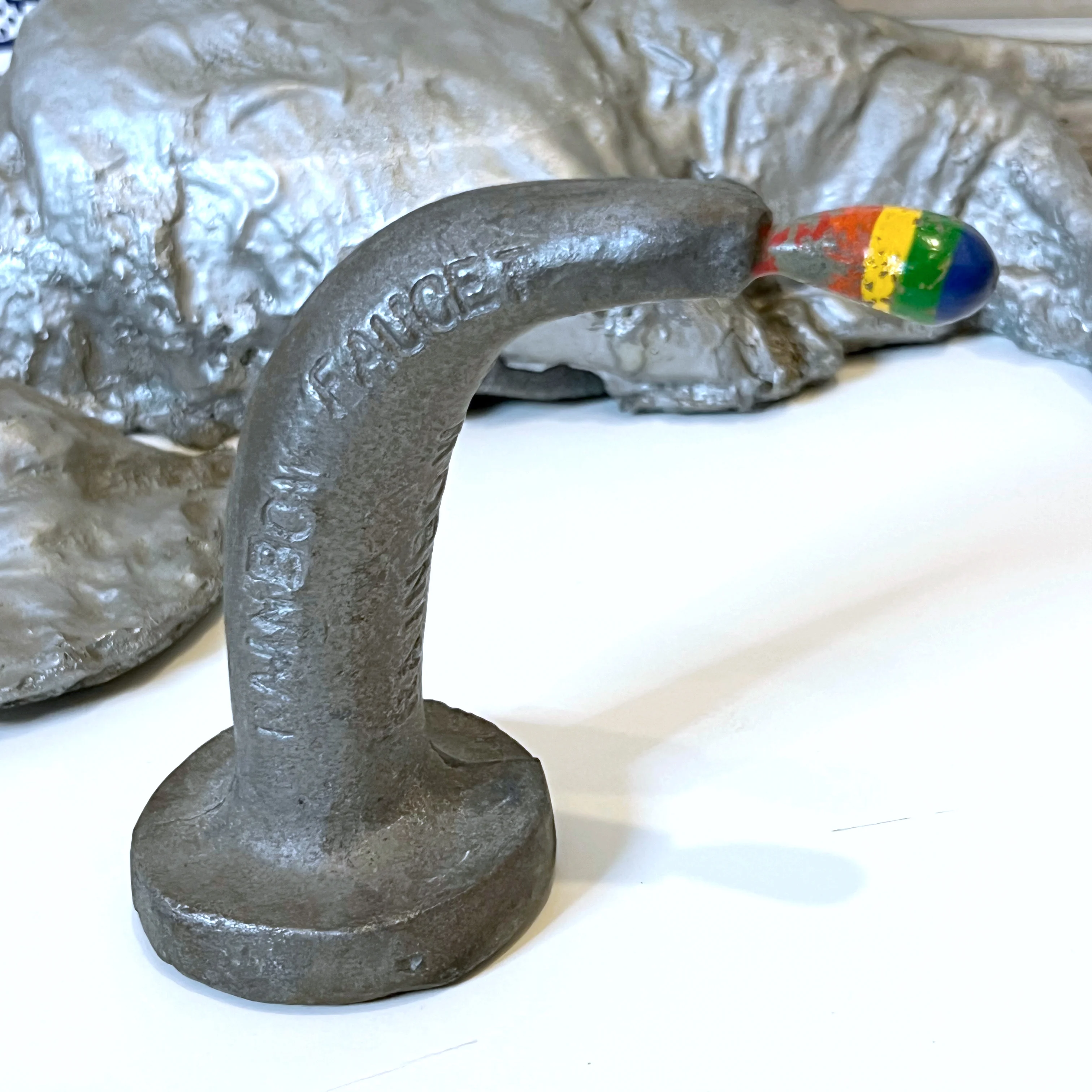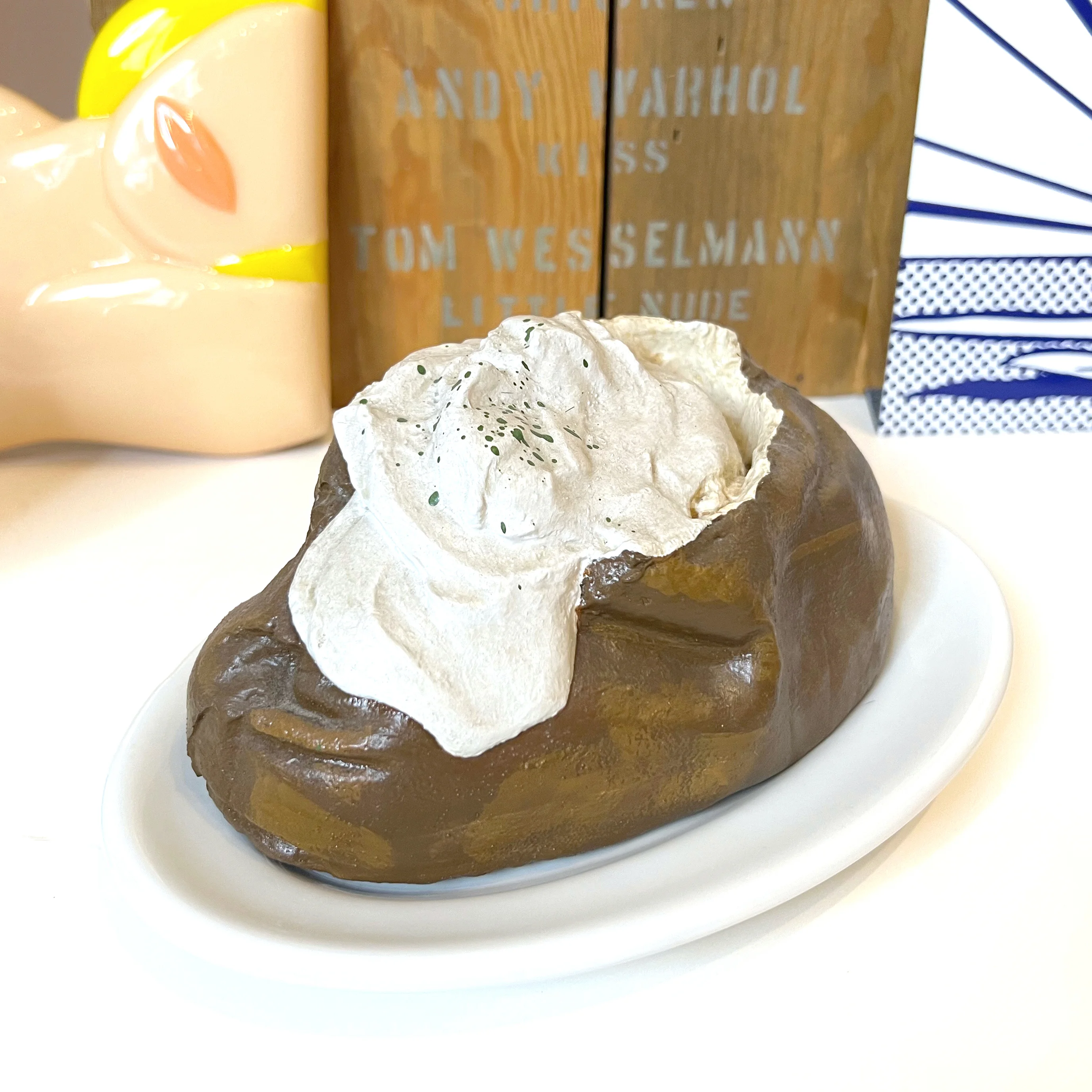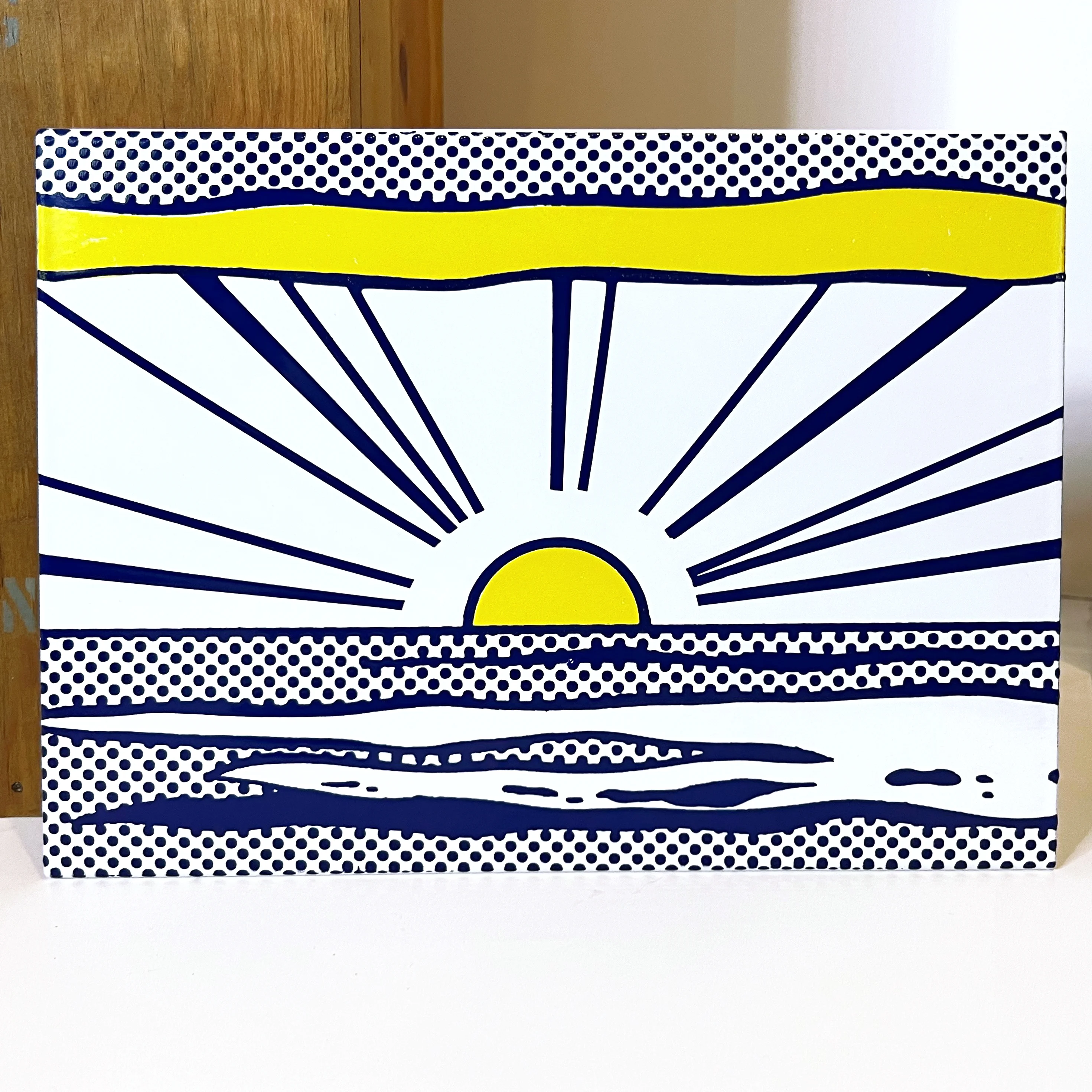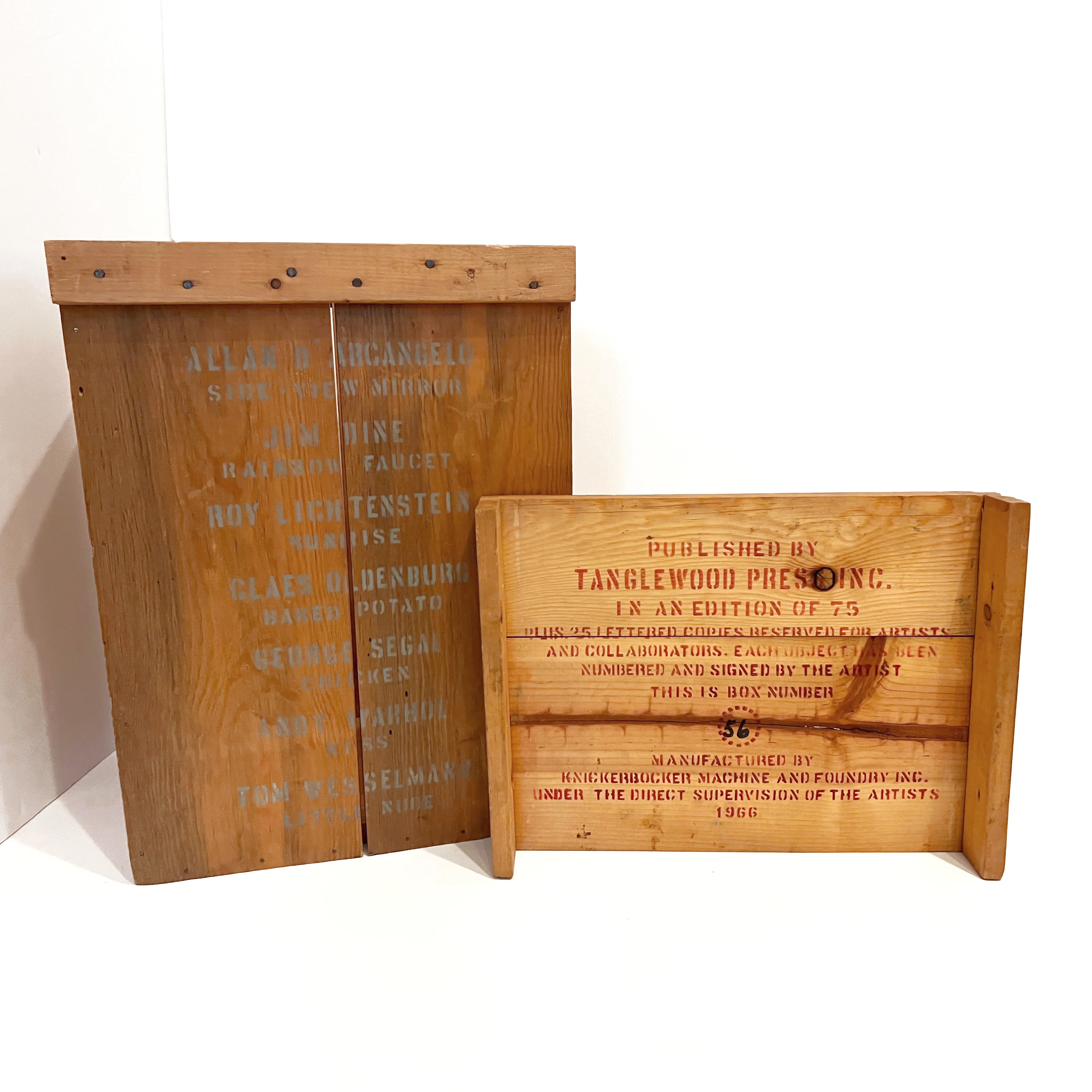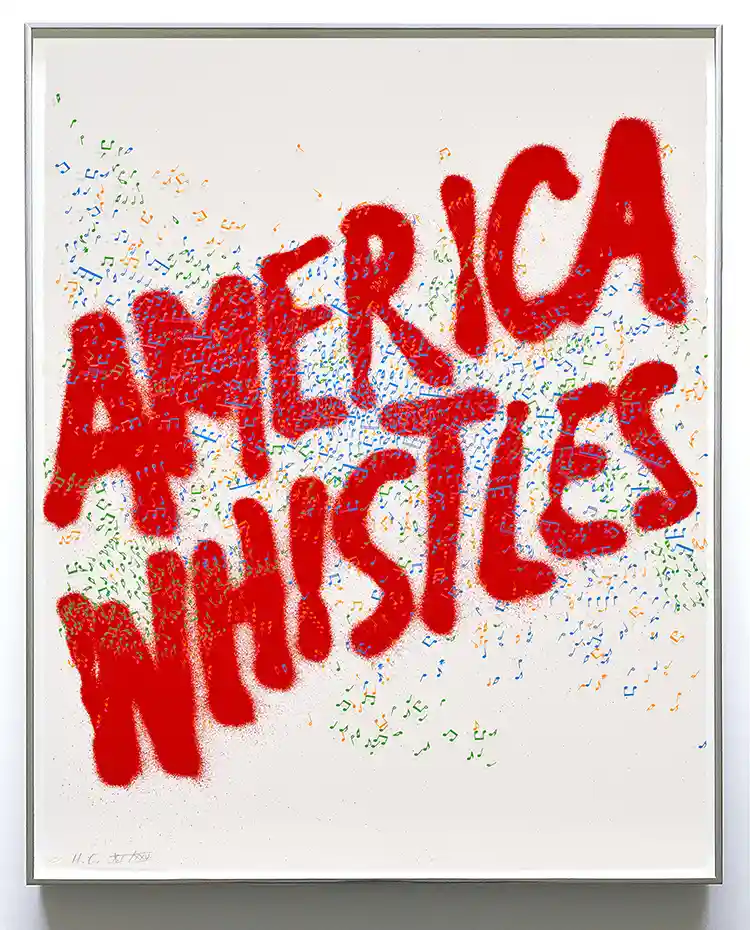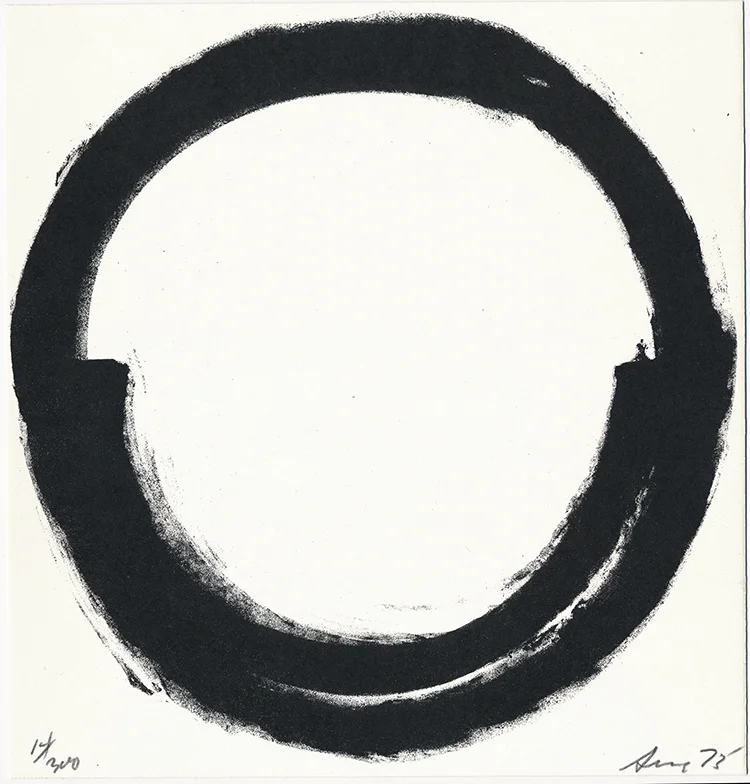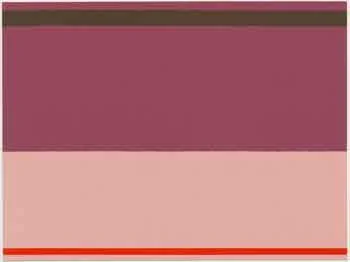Portfolio
Seven Objects in a Box, 1966
Edition of 75 with 24 artist's proofs
Wooden box with stenciled paint artist names and titles, containing multiples by seven artists.
Published by Tanglewood Press Inc., New York
Contents include:
Tom Wesselmann
Great American Nude
vacuum formed plastic
7 1/2 x 7 x 1 1/3 inches
With the Artist’s incised signature, date and numbered on the reverse
George Segal
Chicken
cast acrylic and fiberglass
19 1/2 x 13 3/4 x 4 3/4 inches
Signed & numbered in black felt-tip pen on the inside bottom
Allan D'Arcangelo
Side-View Mirror
screenprint on plexiglass set into chrome side-view mirror mounted on acrylic base
7 1/2 x 4 x 4 inches
Signed and numbered on the base
Andy Warhol
Kiss
Screenprint on plexiglass.
12 1/2 x 8 inches
Signature embossed and incised on plexiglass mount
Jim Dine
Rainbow Faucet
sand-cast aluminum, dipped in acrylic paint
2 5/8 x 3 3/4 x 5 1/2 inches
Signed, dated and numbered on the base
Claes Oldenburg
Baked Potato
cast resin with acrylic paint and porcelain plate
4 1/8 x 4 7/8 x 8 1/4 inches (potato)
1 3/16 x 10 1/2 x 7 1/8 inches (plate)
Initialed and numbered in black paint on the underside of the potato
Roy Lichtenstein
Sunrise
baked enamel in colors, on metal plaque, signed in ink on the verso
8 1/2 x 11 x 1 inches
Signed and numbered in ink on the verso.
Selected Museum Collections
Museum of Modern Art, New York
Harvard Art Museums/Fogg Museum, Cambridge
Addison Gallery of American Art, Andover
Los Angeles County Museum of Art, Los Angeles
Tanglewood Press Inc. was an art publishing company founded by Rosa Esmanand published thirteen limited-edition portfolios by a number of artists from 1965 to 1991. Each Individually Numbered, Signed and Dated "2000" by Seven Objects in a Box in Felt Pen, bottom
Wooden box with stenciled paint artist names and titles, containing multiples by seven artists.
Published by Tanglewood Press Inc., New York
Contents include:
Tom Wesselmann
Great American Nude
vacuum formed plastic
7 1/2 x 7 x 1 1/3 inches
With the Artist’s incised signature, date and numbered on the reverse
George Segal
Chicken
cast acrylic and fiberglass
19 1/2 x 13 3/4 x 4 3/4 inches
Signed & numbered in black felt-tip pen on the inside bottom
Allan D'Arcangelo
Side-View Mirror
screenprint on plexiglass set into chrome side-view mirror mounted on acrylic base
7 1/2 x 4 x 4 inches
Signed and numbered on the base
Andy Warhol
Kiss
Screenprint on plexiglass.
12 1/2 x 8 inches
Signature embossed and incised on plexiglass mount
Jim Dine
Rainbow Faucet
sand-cast aluminum, dipped in acrylic paint
2 5/8 x 3 3/4 x 5 1/2 inches
Signed, dated and numbered on the base
Claes Oldenburg
Baked Potato
cast resin with acrylic paint and porcelain plate
4 1/8 x 4 7/8 x 8 1/4 inches (potato)
1 3/16 x 10 1/2 x 7 1/8 inches (plate)
Initialed and numbered in black paint on the underside of the potato
Roy Lichtenstein
Sunrise
baked enamel in colors, on metal plaque, signed in ink on the verso
8 1/2 x 11 x 1 inches
Signed and numbered in ink on the verso.
Selected Museum Collections
Museum of Modern Art, New York
Harvard Art Museums/Fogg Museum, Cambridge
Addison Gallery of American Art, Andover
Los Angeles County Museum of Art, Los Angeles
Tanglewood Press Inc. was an art publishing company founded by Rosa Esmanand published thirteen limited-edition portfolios by a number of artists from 1965 to 1991. Each Individually Numbered, Signed and Dated "2000" by Seven Objects in a Box in Felt Pen, bottom
